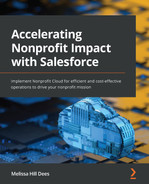Chapter 6: What Else Is Needed from Nonprofit Cloud?
Nonprofit Cloud is designed to facilitate and automate a variety of nonprofit functions and support their missions. In this book, we have looked at use cases and functionality for Nonprofit Success Pack (NPSP), the foundation for Nonprofit Cloud, related to fundraising and program management. We have addressed how to extend program management for human services and how Volunteers for Salesforce (V4S) works for volunteer management. At this point, you might imagine we have covered all the use cases.
However, as we all know, Mr. Ron Popeil, the legendary advertising guru, often said, "Hey! But wait, there's more!" In this chapter, we're going to address use cases and overviews for the following:
- What facilitates grantmaking and grants management?
- Extended capabilities for fundraising and accounting for funds
There are over 1.5 million registered nonprofits in the United States (US). Thousands of those are grantmaking foundations, some are private family foundations, and others are publicly funded. Many foundations focus on one specific area of impact, while others cover a wide variety of causes. We will explore how the grantmaking and grants management tools in Nonprofit Cloud address this flexibility.
Marketing and engagement for nonprofits also vary significantly. No matter the form of communication, engaging constituents of all kinds is a critical need for nonprofits. The constituents may be donors, volunteers, or advocates; the goal may be moving prospects to givers, or it may be encouraging donors to move to a higher level of giving or volunteers to a high level of engagement. We will learn how marketing and engagement tools can automate much of the work that needs to be done in this area.
As a registered nonprofit, the Internal Revenue Service (IRS) requires the filing of appropriate documents each year for nonprofits to report on their financial activities. As such, nonprofits must have a formal accounting system. Nonprofits using Nonprofit Cloud and NPSP track giving data in Salesforce; however, actual cash income and/or donations are tracked using the accounting system. We will look at the value of syncing those two systems and automating donations.
What facilitates grantmaking and grants management?
Many nonprofits and most foundations administer, receive, or manage grants in some form or fashion. Whether making or receiving grants, there are always many data points to track and report on to continue funding or receiving grants. OFM is a basic grants management tool, and the Nonprofit Cloud Grants Management package is a more robust extension of this tool.
Managing grantmaking and outbound funds
OFM is a product of the Open Source Commons, a Salesforce community of mission-driven individuals working together to solve the world's most challenging problems. Through sprints that happen several times per year, OFM was conceived, created, and passed through the security review of Salesforce AppExchange to be made generally available for nonprofits.
The OFM logo is shown here:
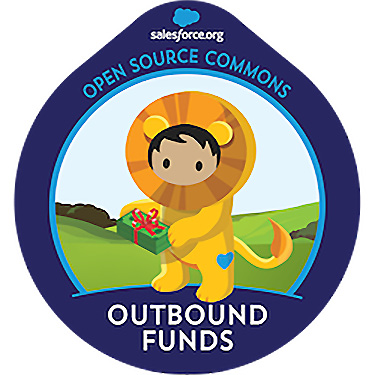
Figure 6.1 – OFM logo from Open Source Commons
What is the use case?
Any nonprofit that manages outgoing funds, such as grants and scholarships, understands how many moving parts are involved. A local school foundation is a great example. They request information from teachers who are looking for small classroom grants for specific projects, and they administer scholarships. What is the best way to manage the collection of information from prospective grantees and scholarship recipients? Once they receive that information, it needs to be reviewed and funding requesters need to be notified. Then, the foundation decides what amount of money goes where and allocates and distributes it appropriately. However, most money comes with strings—those bits and pieces of information that the grantee or fund recipient must report back to the foundation to follow their funding guidelines.
How OFM helps
OFM helps organizations manage and track funding requests and outgoing funds by adding a new layer of custom objects and fields that work in conjunction with Salesforce and in both the NPSP and Education Data Architecture (EDA) environments.
You can see an entity-relationship (ER) diagram for OFM here:
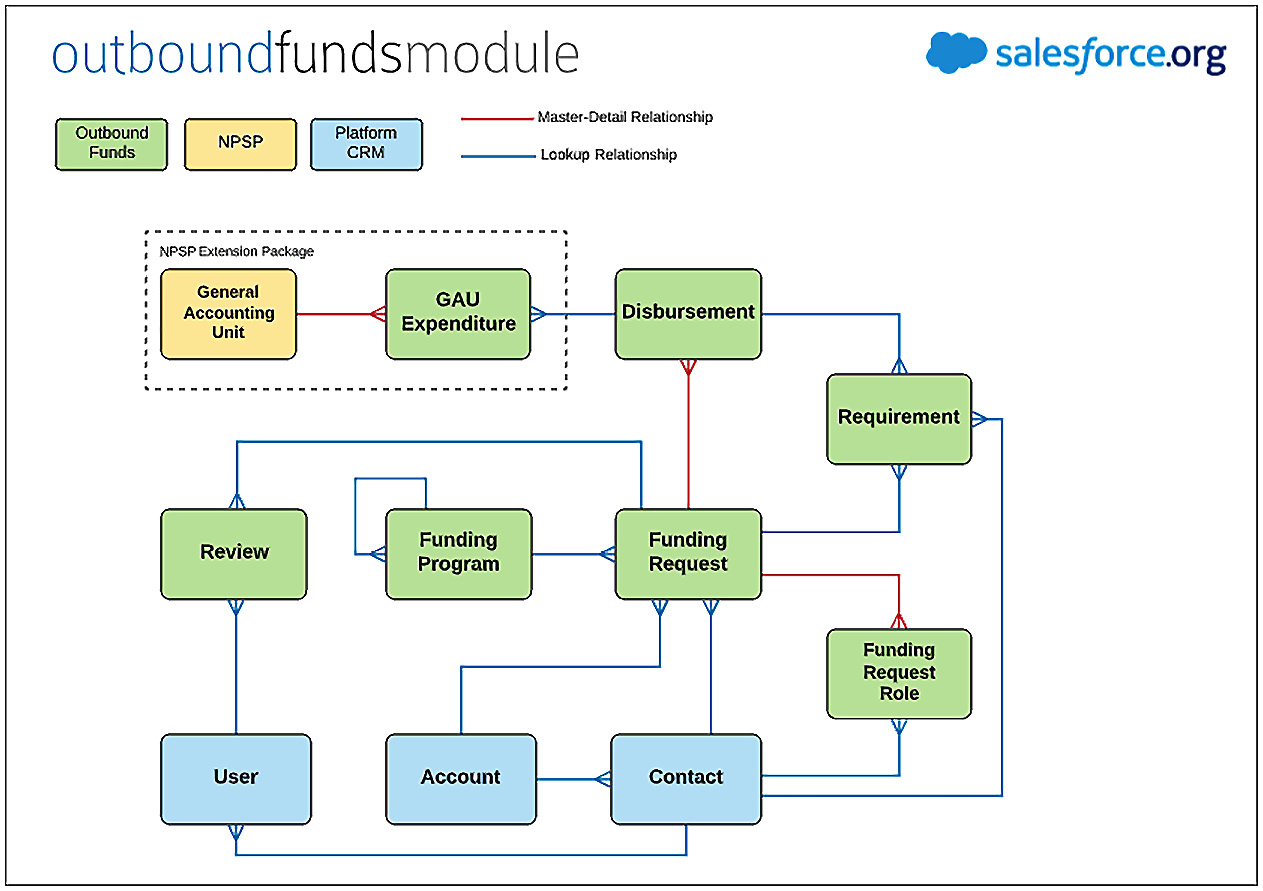
Figure 6.2 – OFM ER diagram
The custom objects, listed in green in the OFM ER diagram, work together in the following way for this application:
- Funding Program—The foundation of OFM, the program can be thematic or strategic and allows for a hierarchy of programs.
- Funding Request—This object contains the data gathered from an application requesting funds.
- Funding Request Role—This is a junction object that provides a way to relate one or more contacts to a funding request.
- Review—This object holds tracked information from reviewers on funding requests.
- Requirement—This object holds the deliverables that must happen in the approval or closing process of grantmaking.
- Disbursement—This object is where actual outgoing funds are tracked.
- GAU Expenditure—This is a junction object to connect a disbursement to a general accounting unit (GAU) to track the appropriate disbursement allocation.
Note
GAU Expenditure is available by installing the NPSP extension package.
To explore the use of OFM, consider a foundation that has funds available to impact the area of childhood hunger. The foundation invites a nonprofit to apply for funds to buy snacks for an after-school program. The status in the following screenshot shows that the nonprofit has been invited but not yet replied to. Notice that the foundation can track reviews when the nonprofits apply, the amount disbursed, and the requirements of the grant:
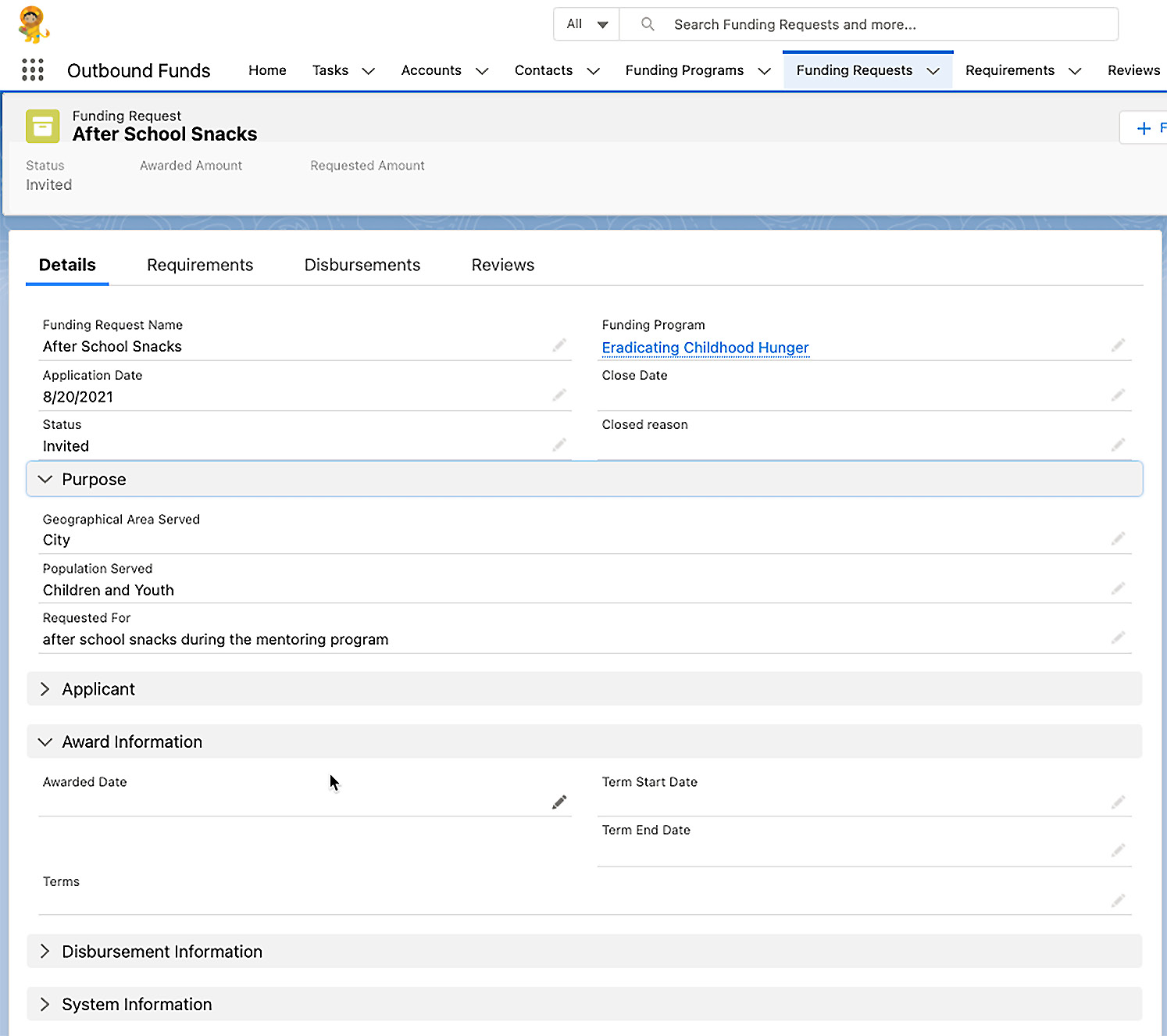
Figure 6.3 – Example of a Funding Request record and related information in OFM
Extending grantmaking capabilities
Grants Management is a paid offering from Salesforce to extend the capabilities of OFM with one additional custom object and an action plan template, an action plan, and document checklist objects from the Salesforce platform.
The additional custom object used by Grants Management is the verification check object. The verification check object allows you to track documents needed, requested, and received for an organization that is requesting funding. You can see an example of this in the following screenshot:
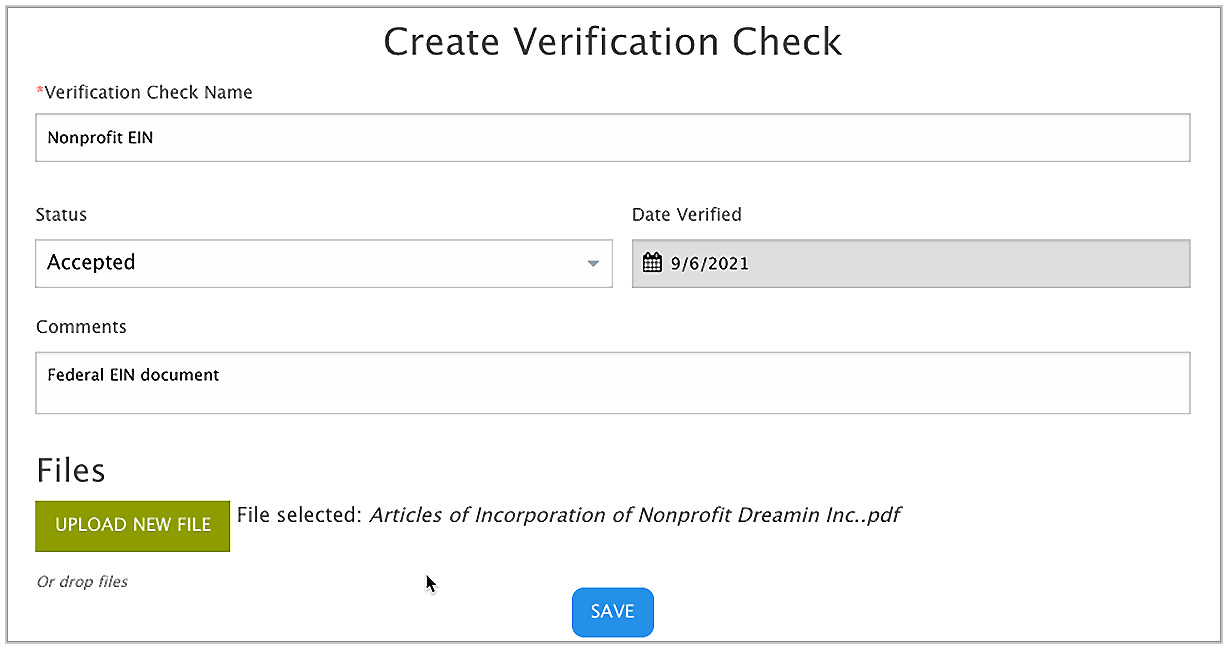
Figure 6.4 – Example of a verification check entry
If the grantmaking business process is particularly complex or information is compiled over a long period, the verification check checklist helps consistently manage the process.
Extended capabilities for fundraising and accounting for funds
To truly give a nonprofit a 360-degree view of constituents, Salesforce offers the following two additional paid products that are new as of 2020-2021:
- Elevate
- Accounting Subledger
Elevate extends fundraising capabilities, particularly in relation to Experience Cloud. The Accounting Subledger product helps prepare data for migration to external accounting sources.
Elevate – a new way to give to nonprofits
Elevate is a new paid product from Salesforce. It integrates with a variety of payment providers as well as with Salesforce NPSP (and with the Salesforce EDA as well). It has out-of-the-box donation forms called Giving Pages and is designed for mobile-first applications.
Accounting Subledger
Accounting Subledger is a paid product from Salesforce. The goal of Accounting Subledger is to prepare donor data for external accounting systems. This streamlines and deduplicates processes associated with donations and with accounting for those donations. As a nonprofit, fundraisers enter information regarding donations in Salesforce, whereas the financial team enters information in an accounting system; thus, the nonprofit information is not in sync. Accounting Subledger allows Salesforce to be the single source of truth (SSOT) while making it easy to export data to any accounting system that allows imports of data.
Summary
For grantmaking foundations, automating requests for grant proposals, grants requests, grant disbursements, and grant requirements can be handled by the Open Source Commons OFM and Grants Management. The flexibility of the OFM architecture allows grantmaking organizations to customize the system to meet their specific needs within its framework. The Grants Management package extends the functionality by providing verification checks.
Nonprofit Cloud offers a variety of levels for marketing and engagement, depending on the resources the nonprofit has and how complex the nonprofit's marketing and engagement plans are. From campaigns that come as a part of Power of Us donations, many nonprofits can do rudimentary email marketing campaigns. For more automation and more sophisticated emails and templates, Pardot provides nonprofits with those options. For nonprofits who need the highest level of marketing and engagement, Marketing Cloud for Nonprofits provides all the tools, including building personalized journeys for constituents, integration with Google Analytics, and all the true business-to-consumer (B2C) or, in this case, nonprofit-to-constituent moves management that is available, including integrating with the new payment system, Elevate.
Remember that at the beginning of the chapter, we discussed the fact that as a registered nonprofit, the IRS requires nonprofits to file the appropriate documents each year to report on their financial activities. Reconciling donor information in Salesforce with accounting information in another system has traditionally been a time-consuming manual process. With Accounting Subledger, we learned how this tool prepares Salesforce data for import into a variety of accounting systems. This one tool makes the donor and accounting process more efficient and diminishes entry errors. It also provides one SOT for a nonprofit organization and keeps fundraisers and accounting in sync.
We've explored the options that exist to help nonprofits automate their work in Salesforce. Domain Expertise counts for 20% of the Nonprofit Cloud Consultant exam.
In the next chapter, we will begin to learn about change management, governance, and tools for organizational alignment. These are critical pieces of the Nonprofit Cloud Consultant certification section on Implementation Strategies and Best Practices, which makes up 21% of the total questions.
Further reading
To follow along with this chapter, you will require the following:
- GitHub repository for Outbound Funds Module (OFM):
https://github.com/SalesforceFoundation/OutboundFundsModule
- Data dictionary for OFM:
